By Carolyn Khew, The Straits Times, Thursday, 5 November 2015
PHOTO: NPARKS
mypaper, Thursday, 05 November 2015, Page A5, Top Stories
SINGAPORE - A unique $16 million bridge reserved for animals such as civets and pangolins is opening its doors for the first time to another species - humans.
In the next two months, the National Parks Board (NParks) will conduct eight guided walks of the Eco-Link @ BKE, South-east Asia's first ecological bridge. This will become a monthly affair from March.
https://blogger.googleusercontent.com/img/b/R29vZ2xl/AVvXsEgueoa4ZSoNbjKrQSFCMGFHLaOs-yTwJNsjbOqHZGpFUFyO2hkvhPY_cq1O6noerdZblwb77Hhqmgs5zUXYz5cxb-oxq51qtFEAmdjefAQ8iK2VkhZSUqkly4gyOe1mv2OmRblHA5ADQOI/s1600/ecolinkbke_10.jpg
http://news.asiaone.com/sites/default/files/styles/w641/public/original_images/Nov2015/ecolinkbke_10.jpg?itok=JtWm0ilm
http://news.asiaone.com/news/singapore/take-walk-along-bridge-specially-reserved-animals
The 62m bridge, which was completed in 2013, has so far been seen only from a distance by motorists on the Bukit Timah Expressway (BKE). It was built to reconnect the Bukit Timah Nature Reserve and Central Catchment Nature Reserve to allow wildlife in both areas to safely cross the BKE, which separated the two forests when it was built in 1986.
Source: NPARKS,
PHOTOS: NPARKS, Jamie Koh, Nick Baker, Dr. Leong Tzi Ming, ST GRAPHICS: Lim Yong
https://blogger.googleusercontent.com/img/b/R29vZ2xl/AVvXsEgrvfJfIIKKFPOHJhqpfDRpQFnC_zFkeVOx9ok7_2YzI8Y7QUgN_2eGMreIesGnlPfFLingD3DpVPLaf5XjfC_lXfHDVd4vVMn_XY-bBxBbEG_-oT-vh0XPsCuAecc_Mul6Oi3JQp2BVsE/s1600/bkeecolink.jpg
http://www.asiaone.com/sites/default/files/bkeecolink.jpg
http://news.asiaone.com/news/singapore/take-walk-along-bridge-specially-reserved-animals
During the guided walks, visitors will be able to learn more about the different kinds of animals that use the link as well as interesting facts about both nature reserves. To minimise disturbance, the number of visitors will be limited to 20 a tour and they will use only a small pathway at the side of the bridge.
 PHOTO: To minimise disturbance, the number of visitors will be limited to 20 a tour and they will use only a small pathway at the side of the bridge.
PHOTO: To minimise disturbance, the number of visitors will be limited to 20 a tour and they will use only a small pathway at the side of the bridge. Photo Source: The Straits Times
https://blogger.googleusercontent.com/img/b/R29vZ2xl/AVvXsEjNEzEFbpxjycohpGaz0MQUQuvqLEFKv81oHuE36U3Bo7UQXPBpjqwvSDjrU8ol24yQ7pz3gmEXGInk2u5HxQz3NnZFi9X94nLGB2YWrufhKAhxKcWKVhJsOcoVBQqF-ehHmf6jo32Q7s0/s1600/ecolinkbke_3.jpg
http://news.asiaone.com/sites/default/files/styles/w641/public/original_images/Nov2015/ecolinkbke_3.jpg?itok=1uhDJyqR
http://news.asiaone.com/news/singapore/take-walk-along-bridge-specially-reserved-animals
Photo Source: The Straits Times
https://blogger.googleusercontent.com/img/b/R29vZ2xl/AVvXsEi6GipiwBTk4Jx0VZrQZVTBdhKbV1hDSIio-prpRVeQwO5JwyCtKxn5u5MeUOTi57hyphenhyphenRwIvA8zCJziGWiE8qNsXCGgYC-tezplsorIr9uh4TCPJ1-IXHfJ2GbwBhADRhKnLsEKkqbrkMHE/s1600/ecolinkbke_2.jpg
http://news.asiaone.com/sites/default/files/styles/w641/public/original_images/Nov2015/ecolinkbke_2.jpg?itok=otoLGM-R
http://news.asiaone.com/news/singapore/take-walk-along-bridge-specially-reserved-animals
Photo Source: The Straits Times
https://blogger.googleusercontent.com/img/b/R29vZ2xl/AVvXsEjqJhkGaHEte5X965izcX1jBggcDJXA4nPlLvVd6zwwIcqeB85zL96ZanTW2KiPSUgzngCX7VpQ989ipQyXl65otAefUxTLIuPv4vdVbikzw_eUbkO_qk8CN5mEqLM_NFjuG6KGoOaMFGc/s1600/ecolinkbke_9.jpg
http://news.asiaone.com/sites/default/files/styles/w641/public/original_images/Nov2015/ecolinkbke_9.jpg?itok=qzGzjiGg
http://news.asiaone.com/news/singapore/take-walk-along-bridge-specially-reserved-animals
Since 2013, NParks has worked with the community, including student groups, to carry out projects such as animal surveys, and plant more than 3,000 native flora on the bridge. Some of these can grow up to 15m and are meant to simulate the natural habitat of animals.
https://blogger.googleusercontent.com/img/b/R29vZ2xl/AVvXsEjqor3T3FpIboq4dQcaACGXL3SsqmMoW-xdHebshXT9v7wMsSgO0VdlkGPvfk83Dqojatyw_QkQYa7si24q6gOwaY_7GAi8BVG7abmWaXxgZEDqLl1lLbipO3IwU12S3bMPizJsGtUWDSg/s1600/ecolinkbke_1.jpg
http://news.asiaone.com/sites/default/files/styles/w641/public/original_images/Nov2015/ecolinkbke_1.jpg?itok=-Y-c2FgO
http://news.asiaone.com/news/singapore/take-walk-along-bridge-specially-reserved-animals reserved-animals
Posted by Father Clary, Peacehill whose soul found its way towards Jesus in 2010 July 5.
https://blogger.googleusercontent.com/img/b/R29vZ2xl/AVvXsEjzl4ghieiePZ_NWdlaWacQmcD0nV-yTOuYjnKLgEN8f2_uoKKQ7x5iGwJ1B1udkmfiN54F_2i25PSjfMkkhaaHxy2tFdAxptlRYyiSnQQuo4KWb5O-8qMQgyGcNA7wLm9Cd3DV_PuIKDo/s1600/photodune-1780281-planting-mangrove-tree-s1311.jpg
http://peacehill.in/wp-content/uploads/2013/04/photodune-1780281-planting-mangrove-tree-s1311.jpg
http://peacehill.in/gallery/
Plants are also grown at the edge of the bridge to create a buffer against noise and dust pollution so that animals will not be inhibited from using it.
Photo Source: The Straits Times
https://blogger.googleusercontent.com/img/b/R29vZ2xl/AVvXsEjkJ9jjVgLq-83X1Qe3Jjy8zlyZk8m7AvvQqt6uoMnfakXZX5T14ML2062dKmM90ao3Z6P1UXQJ-A5oEdi6OPnF-34ZoxygsttUQyILadnuyTsnD3JPAszWEZsUqmlEhq2FSg7vlrtEGqQ/s1600/ecolinkbke_4.jpg
http://news.asiaone.com/sites/default/files/styles/w641/public/original_images/Nov2015/ecolinkbke_4.jpg?itok=MhhXrlXE
http://news.asiaone.com/news/singapore/take-walk-along-bridge-specially-reserved-animals
Already, more than 15 species of mammals and birds have been spotted using the green corridor. They include the common palm civet and the critically endangered Sunda pangolin - all captured on cameras installed at the site.
While the ecological corridor is the region's first, it is not new in other parts of the world like Germany and the United States.
Dr Shawn Lum, president of the Nature Society (Singapore), said that there had been initial concerns about whether animals would really use the bridge, given the traffic noise and the exposed environment.

Photo Source: The Straits Times
https://blogger.googleusercontent.com/img/b/R29vZ2xl/AVvXsEgfaHRc9mWsLCfrzp7VE3AdyXYGfzimTdlgxnYEld6ezb94nF_rdkIPkg_XZacqSkyAOzPqyoXMgLiiNdUMVPuCA6Sekh3zjJ5Wn8f9eCBraW0HOMYHeyIo9sD6U_pCXFZA-pbFra15pWA/s1600/ecolinkbke_8.jpg
http://news.asiaone.com/sites/default/files/styles/w641/public/original_images/Nov2015/ecolinkbke_8.jpg?itok=K0DXCulF
http://news.asiaone.com/news/singapore/take-walk-along-bridge-specially-reserved-animals
"Wildlife is starting to come and the vegetation is starting to grow... So I'm delighted, and whatever initial concerns or worries that we had, luckily turned out not to have materialised," he said. The results so far are encouraging, said Mr Wong Tuan Wah, NParks' director of conservation.
Photo Source: The Straits Times
https://blogger.googleusercontent.com/img/b/R29vZ2xl/AVvXsEjyrVPIph9yCmyghJAY_IaL7w3W4NceDTfTq05wxtjQsHjcblrmXvXNWhEHNUZrVe3L2bwjm3ZrzQx-XBElVFD7kblCl_g3RlIHO45bQsaBybegZlll5PayVC-J2Q5ulKeUzStUWSSayIk/s1600/ecolinkbke_11.jpg
http://news.asiaone.com/sites/default/files/styles/w641/public/original_images/Nov2015/ecolinkbke_11.jpg?itok=pNuIwtbh
http://news.asiaone.com/news/singapore/take-walk-along-bridge-specially-reserved-animals
He highlighted how the number of pangolin road kills have gone down. According to NParks, there were no reports of pangolin road kills from April last year to last month. From 1994 to 2013, an average of about two pangolins died on the road each year. When the vegetation grows even more, he hopes that other animals like the elusive banded leaf monkey will also make use of the bridge.
Posted by Sifter (via h4m on Reddit) on 23 July 2012 https://blogger.googleusercontent.com/img/b/R29vZ2xl/AVvXsEifDCvsTwBK0er0F9IK-EnWlhc6BOuKudUnVaLt65wt_Szv3gTFqsraUkbVUWJf1PpITXjjdTZRR0X3od6fgRqDoFUT5IMrjXx-E_82vrToe48GIsPOaC0wlj0RYmf9tSit0LOSJdpoiKE/s1600/b38-birkenau-germany-animal-bridge-wildlife-crossing-overpass.jpg
https://twistedsifter.files.wordpress.com/2012/07/b38-birkenau-germany-animal-bridge-wildlife-crossing-overpass.jpg?w=800&h=531
http://twistedsifter.com/2012/07/animal-bridges-around-the-world/
Posted by Sifter (via h4m on Reddit) on 23 July 2012
https://blogger.googleusercontent.com/img/b/R29vZ2xl/AVvXsEit9zeM5Ztzr46PhmNsiy6_D9BHe3rHkejnFpAislxVzcBgVUDvAmi3wsuamL8aCFISezUfSowt5DtdPnKb65y0kJyOatqyoNiFPwQzNRgPJc6HyclKHSM18iLXcHYVWN2xss7UTPHoJ6c/s1600/a50-netherlands-animal-bridge-wildlife-crossing-overpass.jpg
https://twistedsifter.files.wordpress.com/2012/07/a50-netherlands-animal-bridge-wildlife-crossing-overpass.jpg?w=480&h=384
http://twistedsifter.com/2012/07/animal-bridges-around-the-world
Reference
- https://blogger.googleusercontent.com/img/b/R29vZ2xl/AVvXsEiW263CCJK2sTLPfqolOP1SDg1zSrTWTy-J5IAsPfcOh6sCOyhGjgQ6A8lgGyoruce8wcc6VYsi1YBFuU7g2Z4ycw0s5T5humyY95Nsw_agkeIj0NavZFsCIvr_jcqyumcErcXo-GH8m-E/s1600/Eco-Link+%2540+BKE.jpg
- mypaper, Thursday, 05 November 2015, Page A5, Top Stories
- https://blogger.googleusercontent.com/img/b/R29vZ2xl/AVvXsEgueoa4ZSoNbjKrQSFCMGFHLaOs-yTwJNsjbOqHZGpFUFyO2hkvhPY_cq1O6noerdZblwb77Hhqmgs5zUXYz5cxb-oxq51qtFEAmdjefAQ8iK2VkhZSUqkly4gyOe1mv2OmRblHA5ADQOI/s1600/ecolinkbke_10.jpg
- http://news.asiaone.com/sites/default/files/styles/w641/public/original_images/Nov2015/ecolinkbke_10.jpg?itok=JtWm0ilm
- http://news.asiaone.com/news/singapore/take-walk-along-bridge-specially-reserved-animals
- https://blogger.googleusercontent.com/img/b/R29vZ2xl/AVvXsEgrvfJfIIKKFPOHJhqpfDRpQFnC_zFkeVOx9ok7_2YzI8Y7QUgN_2eGMreIesGnlPfFLingD3DpVPLaf5XjfC_lXfHDVd4vVMn_XY-bBxBbEG_-oT-vh0XPsCuAecc_Mul6Oi3JQp2BVsE/s1600/bkeecolink.jpg
- http://www.asiaone.com/sites/default/files/bkeecolink.jpg
- http://news.asiaone.com/news/singapore/take-walk-along-bridge-specially-reserved-animals
- https://blogger.googleusercontent.com/img/b/R29vZ2xl/AVvXsEjNEzEFbpxjycohpGaz0MQUQuvqLEFKv81oHuE36U3Bo7UQXPBpjqwvSDjrU8ol24yQ7pz3gmEXGInk2u5HxQz3NnZFi9X94nLGB2YWrufhKAhxKcWKVhJsOcoVBQqF-ehHmf6jo32Q7s0/s1600/ecolinkbke_3.jpg
- http://news.asiaone.com/sites/default/files/styles/w641/public/original_images/Nov2015/ecolinkbke_3.jpg?itok=1uhDJyqR
- http://news.asiaone.com/news/singapore/take-walk-along-bridge-specially-reserved-animals
- https://blogger.googleusercontent.com/img/b/R29vZ2xl/AVvXsEi6GipiwBTk4Jx0VZrQZVTBdhKbV1hDSIio-prpRVeQwO5JwyCtKxn5u5MeUOTi57hyphenhyphenRwIvA8zCJziGWiE8qNsXCGgYC-tezplsorIr9uh4TCPJ1-IXHfJ2GbwBhADRhKnLsEKkqbrkMHE/s1600/ecolinkbke_2.jpg
- http://news.asiaone.com/sites/default/files/styles/w641/public/original_images/Nov2015/ecolinkbke_2.jpg?itok=otoLGM-R
- http://news.asiaone.com/news/singapore/take-walk-along-bridge-specially-reserved-animals
- https://blogger.googleusercontent.com/img/b/R29vZ2xl/AVvXsEjqJhkGaHEte5X965izcX1jBggcDJXA4nPlLvVd6zwwIcqeB85zL96ZanTW2KiPSUgzngCX7VpQ989ipQyXl65otAefUxTLIuPv4vdVbikzw_eUbkO_qk8CN5mEqLM_NFjuG6KGoOaMFGc/s1600/ecolinkbke_9.jpg
- http://news.asiaone.com/sites/default/files/styles/w641/public/original_images/Nov2015/ecolinkbke_9.jpg?itok=qzGzjiGg
- http://news.asiaone.com/news/singapore/take-walk-along-bridge-specially-reserved-animals
- https://blogger.googleusercontent.com/img/b/R29vZ2xl/AVvXsEjqor3T3FpIboq4dQcaACGXL3SsqmMoW-xdHebshXT9v7wMsSgO0VdlkGPvfk83Dqojatyw_QkQYa7si24q6gOwaY_7GAi8BVG7abmWaXxgZEDqLl1lLbipO3IwU12S3bMPizJsGtUWDSg/s1600/ecolinkbke_1.jpg
- http://news.asiaone.com/sites/default/files/styles/w641/public/original_images/Nov2015/ecolinkbke_1.jpg?itok=-Y-c2FgO
- http://news.asiaone.com/news/singapore/take-walk-along-bridge-specially-reserved-animals
- https://blogger.googleusercontent.com/img/b/R29vZ2xl/AVvXsEjzl4ghieiePZ_NWdlaWacQmcD0nV-yTOuYjnKLgEN8f2_uoKKQ7x5iGwJ1B1udkmfiN54F_2i25PSjfMkkhaaHxy2tFdAxptlRYyiSnQQuo4KWb5O-8qMQgyGcNA7wLm9Cd3DV_PuIKDo/s1600/photodune-1780281-planting-mangrove-tree-s1311.jpg
- http://peacehill.in/wp-content/uploads/2013/04/photodune-1780281-planting-mangrove-tree-s1311.jpg
- http://peacehill.in/gallery/
- https://blogger.googleusercontent.com/img/b/R29vZ2xl/AVvXsEjkJ9jjVgLq-83X1Qe3Jjy8zlyZk8m7AvvQqt6uoMnfakXZX5T14ML2062dKmM90ao3Z6P1UXQJ-A5oEdi6OPnF-34ZoxygsttUQyILadnuyTsnD3JPAszWEZsUqmlEhq2FSg7vlrtEGqQ/s1600/ecolinkbke_4.jpg
- http://news.asiaone.com/sites/default/files/styles/w641/public/original_images/Nov2015/ecolinkbke_4.jpg?itok=MhhXrlXE
- http://news.asiaone.com/news/singapore/take-walk-along-bridge-specially-reserved-animals
- https://blogger.googleusercontent.com/img/b/R29vZ2xl/AVvXsEgfaHRc9mWsLCfrzp7VE3AdyXYGfzimTdlgxnYEld6ezb94nF_rdkIPkg_XZacqSkyAOzPqyoXMgLiiNdUMVPuCA6Sekh3zjJ5Wn8f9eCBraW0HOMYHeyIo9sD6U_pCXFZA-pbFra15pWA/s1600/ecolinkbke_8.jpg
- http://news.asiaone.com/sites/default/files/styles/w641/public/original_images/Nov2015/ecolinkbke_8.jpg?itok=K0DXCulF
- http://news.asiaone.com/news/singapore/take-walk-along-bridge-specially-reserved-animals
- https://blogger.googleusercontent.com/img/b/R29vZ2xl/AVvXsEjyrVPIph9yCmyghJAY_IaL7w3W4NceDTfTq05wxtjQsHjcblrmXvXNWhEHNUZrVe3L2bwjm3ZrzQx-XBElVFD7kblCl_g3RlIHO45bQsaBybegZlll5PayVC-J2Q5ulKeUzStUWSSayIk/s1600/ecolinkbke_11.jpg
- http://news.asiaone.com/sites/default/files/styles/w641/public/original_images/Nov2015/ecolinkbke_11.jpg?itok=pNuIwtbh
- http://news.asiaone.com/news/singapore/take-walk-along-bridge-specially-reserved-animals
- https://blogger.googleusercontent.com/img/b/R29vZ2xl/AVvXsEifDCvsTwBK0er0F9IK-EnWlhc6BOuKudUnVaLt65wt_Szv3gTFqsraUkbVUWJf1PpITXjjdTZRR0X3od6fgRqDoFUT5IMrjXx-E_82vrToe48GIsPOaC0wlj0RYmf9tSit0LOSJdpoiKE/s1600/b38-birkenau-germany-animal-bridge-wildlife-crossing-overpass.jpg
- https://twistedsifter.files.wordpress.com/2012/07/b38-birkenau-germany-animal-bridge-wildlife-crossing-overpass.jpg?w=800&h=531
- http://twistedsifter.com/2012/07/animal-bridges-around-the-world/
- https://blogger.googleusercontent.com/img/b/R29vZ2xl/AVvXsEit9zeM5Ztzr46PhmNsiy6_D9BHe3rHkejnFpAislxVzcBgVUDvAmi3wsuamL8aCFISezUfSowt5DtdPnKb65y0kJyOatqyoNiFPwQzNRgPJc6HyclKHSM18iLXcHYVWN2xss7UTPHoJ6c/s1600/a50-netherlands-animal-bridge-wildlife-crossing-overpass.jpg
- https://twistedsifter.files.wordpress.com/2012/07/a50-netherlands-animal-bridge-wildlife-crossing-overpass.jpg?w=480&h=384
- http://twistedsifter.com/2012/07/animal-bridges-around-the-world






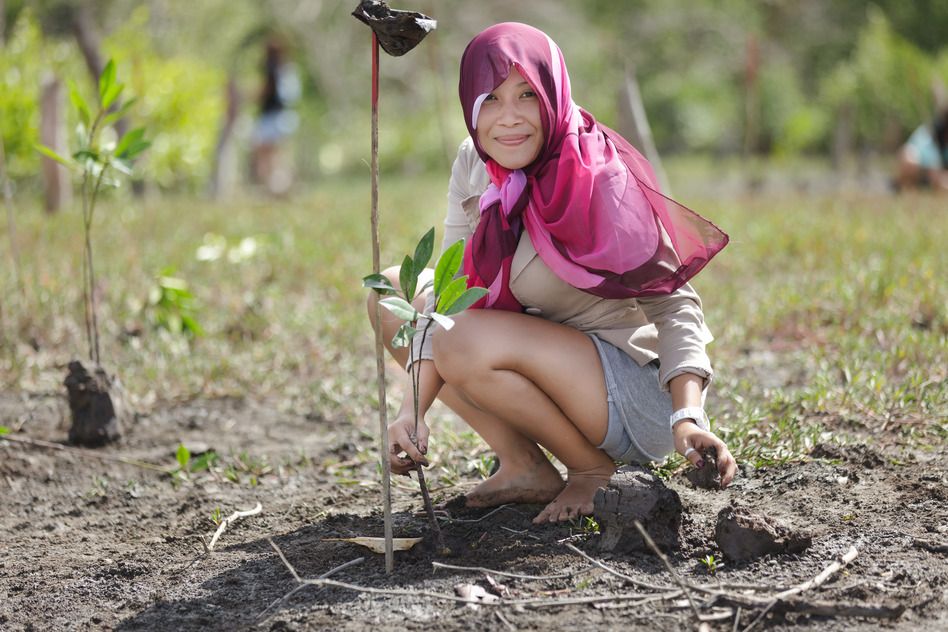






















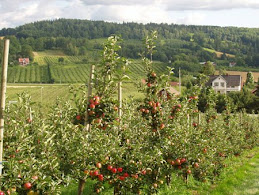










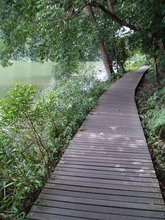







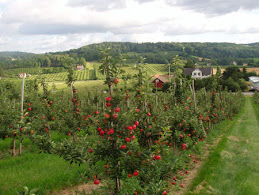



.jpg)
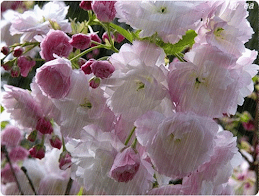.gif)
.jpg)



























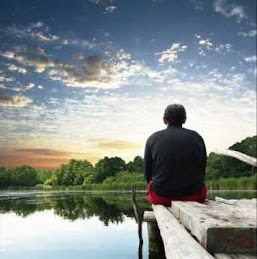
























%20-%20%E5%82%B7%E5%BF%83%E7%9A%84%E8%B7%AF%20(Sh%C4%81ng%20x%C4%ABn%20de%20l%C3%B9)%20-%20The%20Road%20of%20Sorrow%20(With%20Subtitle)_11.png)


